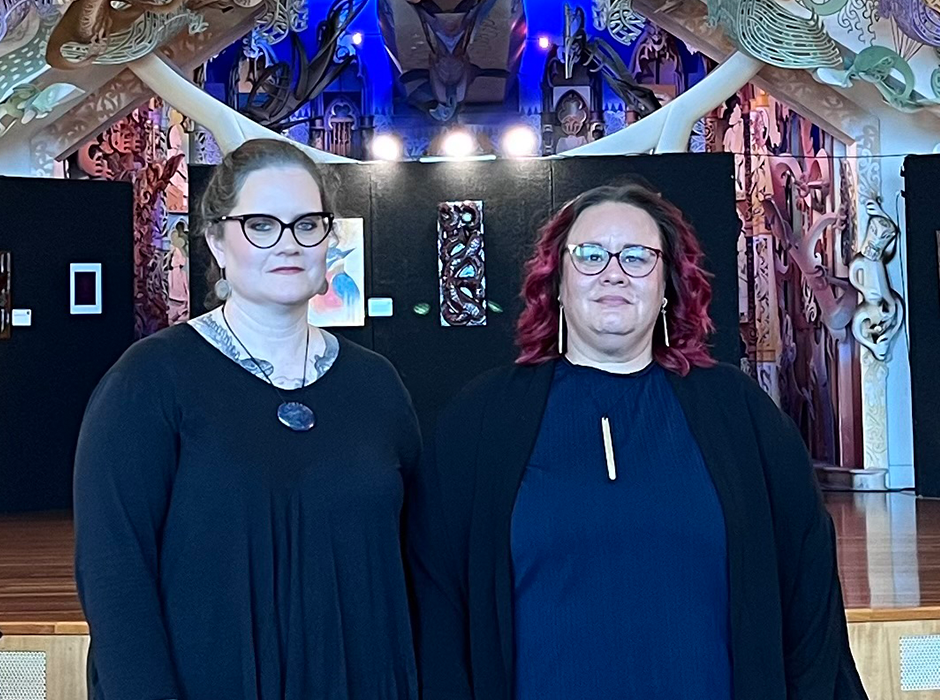
Otago’s Dr Monica Tromp (left) and Dr Amber Aranui, from the Museum of New Zealand Te Papa Tongarewa, are co-leaders on the project.
A project co-led by the University of Otago and Te Papa has been awarded a Smart Ideas grant from the Ministry of Business, Innovation and Employment’s (MBIE) Endeavour Fund.
The project, developing a minimally invasive species identification protocol for taonga tūturu, has received $1 million over three years to create a minimally invasive and inexpensive sampling technique to identify the animals used in manufacturing taonga tūturu (precious objects created by Māori artisans).
Dr Monica Tromp, Senior Laboratory Analyst with Southern Pacific Archaeological Research (SPAR) at Otago, and Dr Amber Aranui (Ngāti Kahungunu, Ngāti Tūwharetoa), Curator Mātauranga Māori at the Museum of New Zealand Te Papa Tongarewa, are the co-leads on this project.
“Taonga tūturu have whakapapa (genealogies) that connect them to Te Ao Māori (the Māori world), but, through the process of colonisation, the provenance of many of these objects in museums is unknown,” says Dr Aranui.
Identifying an object’s provenance will greatly enhance the museum and heritage sectors’ ability to find and engage meaningfully with the custodians of these taonga.
“This means taonga tūturu can be cared for in accordance with tikanga and, where possible, repatriated,” Dr Tromp says.
It is impossible to identify the species used in many taonga tūturu materials visually.
A current technique of collagen peptide mass fingerprinting allows for inexpensive and rapid taxonomic identification of materials such as bone, skin, and hair, but requires a piece of an object to be cut off and destroyed.
“This destructive sampling impacts the mauri (life force) of taonga tūturu,” says Dr Aranui.
Through this project, the team aims to develop Minimally Invasive Molecular Story (MIMS). This technique will use a small piece of fine grit polishing film to collect a minute sample for analysis, allowing the mauri (life force) and visible appearance of an object to remain intact while enabling identification of the material.
Other collaborators on this project include zooarchaeologist Dr Karen Greig, Co-Director of SPAR at Otago, Dr Alana Alexander (Te Hikutu: Ngāpuhi, Pākehā) a Rutherford Discovery Fellow in Anatomy at Otago. Two key international researchers are Dr Camilla Speller, an ancient biomolecular archaeologist specialising in proteomics at the University of British Columbia, and Dr Christina Warinner, a biomolecular archaeologist at Harvard focused on recovering and interpreting ancient proteins and DNA.
This multi-disciplinary team sees exciting applications for this technique beyond taonga tūturu:
“Once we have optimised this technique, there are exciting applications for contemporary biodiversity and conservation science.
“It would enable taonga and other species to be readily and inexpensively identified, especially where decomposition or utilisation of the species has made morphological or DNA identification unlikely.
“Contexts for its use include marine mammal strandings and applications at the border to identify incoming animal materials; enabling the protection of endangered plants and animals from international trade,” says Dr Tromp.